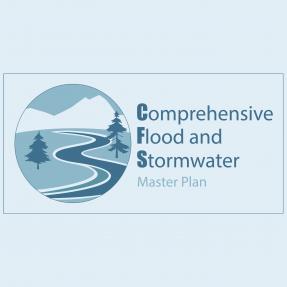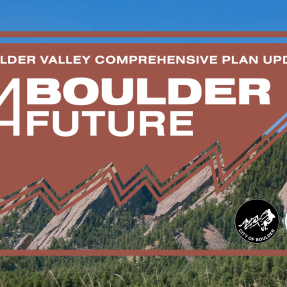The WUMP provides analysis and recommendation on many water utility issues. The following are considered the most important recommendations:
Recommendation 1
The Water Conservation Program (WCP) was evaluated to determine what the program focus should be for the next decade. An overarching goal for future WCP efforts is to:
- tailor water conservation to the city's unique water system;
- focus on the nexus between water and energy conservation; and
- support water-related environmental enhancements.
This includes WCP support for reducing city water use in a way that minimizes energy-intensive water transfers from the west slope projects, to the extent this can be accomplished without jeopardizing the city's drought reserves. Conservation measures that are coordinated so as to not reduce raw water use from the Boulder Creek watershed will also be considered to support additional hydroelectric power generation throughout the city's system.
Recommendation 2
The TWMP included an in-depth technical analysis of the city's existing water treatment facilities and other infrastructure. The analysis indicates that the existing infrastructure should be adequate to meet Boulder's water demand needs well into the future with little need for capacity expansion.
Recommendation 3
The WUMP also reviewed the existing treated water infrastructure. Staff took an inventory of the different parts of the water system (structures, pumps, pipes, valves, etc.) and evaluated the condition of each component. The evaluation was used to develop a predicted replacement schedule.
Staff found it was not necessary to completely fund the predicted level of asset replacement because lower-cost renewal and rehabilitation techniques are available, which can extend the life of many assets. For example, water pipes can be lined and the useful life extended significantly.
Staff recommended that asset replacement be accomplished at 60 to 75 percent of the predicted level. Nonetheless, the predicted replacement schedule has a profound impact on the future financing of the city's water utility, and various financial plans were developed for consideration, as described below.
Recommendation 4
The American Water Works Association provides benchmarking information for asset replacement as a percentage of the predicted replacement rate. This data indicates the average replacement rate for other communities is only about five percent of the predicted level. The city's average rate during the past five years is about 16 percent. However, most water providers are not adequately addressing drinking water system infrastructure replacement needs.
The Report Card for America's Infrastructure, published by the American Society of Civil Engineers, gave an overall grade of D- to the nation's funding of drinking water infrastructure, stating that, "although America spends billions on infrastructure each year, drinking water systems face an annual shortfall of at least $11 billion in funding needed to replace aging facilities that are near the end of their useful life, and to comply with existing and future federal water regulations." Additional evidence concerning this issue comes from the Congressional Budget Office (CBO), which concluded in 2003 that "current funding from all levels of government and current revenues generated from ratepayers will not be sufficient to meet the nation's future demand for water infrastructure. "The CBO estimated the nation's needs for drinking water investments at between $10 billion and $20 billion during the next 20 years.
Recommendation 5
The debt associated with several large city bonds will be paid off during the next 10 years. This includes the debt service associated with the Windy Gap project. The total annual debt service associated with the retirement of these bond obligations is approximately $7 million. This provides an opportunity for the city's water utility to fund several large capital projects without increasing water rates substantially. Projects under consideration to rehabilitate and enhance certain features of the water system include the Carter Lake Pipeline and Hydro, Barker Dam Outlet and Hydro, and the Betasso Water Treatment Facility.
Recommendation 6
The Carter Lake Pipeline is considered the best long-term solution to water quality, operational and security vulnerability issues related to drawing water directly from either the Boulder Feeder Canal or Boulder Reservoir. The Northern Colorado Water Conservancy District submitted a revised permit application to Boulder County in August 2011. Staff will return to the WRAB in 2012 with a revised Community and Environmental Assessment Process (CEAP) report, depending on the county's permit decision and schedule. A final decision on the CEAP will be made by City Council in 2012. The pipeline would also provide the opportunity to develop a hydroelectric generation facility.
Recommendation 7
The Barker Dam outlet facilities are more than 100 years old and in need of significant rehabilitation. The current configuration of the outlet gates requires that Barker Reservoir be nearly emptied to perform a thorough inspection once every 5 to 10 years. Reconfiguration of the outlet facilities would eliminate the need to empty the reservoir for gate inspection. This project would require construction of a vertical shaft near the north embankment, inlet tunnels, an outlet tunnel, an outlet distribution facility, a pipeline to Barker Gravity Line and a valve house. The outlet facilities would provide the opportunity to develop a hydroelectric generation facility.
Recommendation 8
One of the most significant near-term issues is the aging mechanical and electrical equipment at the Betasso Water Treatment Facility. The Betasso Water Treatment Facility is the city's primary water treatment facility and has deteriorated during almost 50 years of operation, despite ongoing maintenance and rehabilitation. Also, pretreatment capacity limitations of the existing flocculation/sedimentation process result in residuals that comprise more water content than desired. This results in inadequate residuals dewatering capacity using the existing drying beds and lagoons. The city has used private contract dewatering and hauling services to supplement the existing on-site facilities. It is recommended that large capital funding ($10-16 million) be allocated in the 2015-2016 time period to address these issues. This project is incorporated in the recommended action plan.
Recommendation 9
Three financial plan options (each with a 20-year time frame) were developed, each consistent with city master plan criteria.
- Fiscally constrained – this plan would require annual rate increases of three percent, assumed to be an inflationary-level increase. However, only 10 percent of the predicted asset replacement would be accomplished.
- Action (WRAB and staff recommended) – this plan would require annual rate increases averaging 1.5 percent above the inflation rate of three percent, for a total of 4.5 percent annually, to perform critical asset replacement/rehabilitation work to provide a sustainable water system for the city's future. Asset replacement would be accomplished at 60 to 75 percent of the predicted level. Staff will continue to monitor and refine the asset replacement analysis and adjust the recommended replacement rate as part of the annual budget process. The action plan is the basis of the proposed 2012-2017 CIP budget for the Water Utility.
- Vision – this plan would require annual rate increases averaging two percent above the assumed inflation rate of three percent, for a total of five percent annually. Asset replacement would be accomplished at 100 percent of the predicted level.
The WUMP identifies three financial plans of investment and, while recommending that the Action Plan be implemented, acceptance of the WUMP does not commit council to implementing the Action Plan. Each year, fiscal resources are evaluated and council decides what level of rate increase, if any, to approve.

